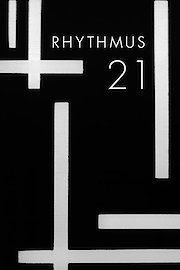
Watch Rhythmus 21
- 1921
- 3 min
-
5.6 (1,485)
Rhythmus 21 is a short abstract animated film created and directed by Hans Richter in 1921. It is widely considered as one of the earliest works of the abstract film genre, which was a new artistic movement that explored the potential of film as a pure medium of visual expression. The film is only about three minutes long and has no storyline or characters. Instead, it consists of a series of geometric shapes and lines that move and transform on the screen, synchronized with a percussive soundtrack. The shapes and lines appear in various combinations and patterns, creating a sense of rhythm and movement that is both hypnotic and intense.
Rhythmus 21 has a very distinct style that sets it apart from other films of its time. The shapes and lines are simplistic and minimalist, yet they are arranged in a way that creates complex visual structures. The use of black and white contrasts also adds to the stark and striking aesthetic of the film.
The film's title, Rhythmus 21, is derived from the concept of rhythm and its relationship with the 21st century. The film is meant to be a reflection of the modernist spirit of the time, which embraced abstraction, experimentation, and a rejection of traditional forms of representation. The film's abstract visuals and non-narrative structure were meant to challenge the conventional expectations of cinema and foster a fresh and innovative approach to filmmaking.
In terms of reception, Rhythmus 21 was praised by contemporary critics for its innovative style and creativity. It was screened at several avant-garde events and exhibitions, including the First International Film Exhibition in Rome in 1922. The film was also influential in shaping the direction of the abstract film movement, inspiring other filmmakers to explore the potential of film as a pure visual medium.
Overall, Rhythmus 21 is an important piece of cinema history that represents a significant shift in the art of filmmaking. It is a testament to the power of visual expression and the potential of cinema to push artistic boundaries and reinvent itself. Even today, almost a century later, the film still retains its power to inspire and captivate audiences with its mesmerizing abstract visuals and rhythmic soundtrack.




















